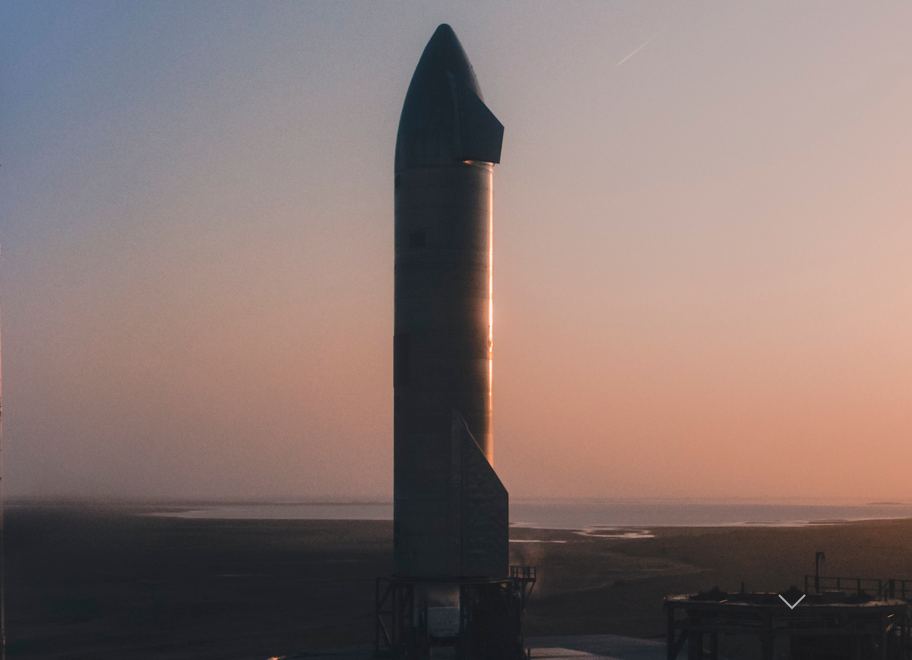Space exploration sure is hard, huh? Luckily, it’s an iterative process, where engineers test and test and test again to work out all the bugs in advance. At least, that’s what we remind ourselves when the prototype goes “kaboom!” Earlier today, the SN11 joins its predecessors by being the fourth Starship prototype to conduct a successful flight test and then explode while attempting to make a landing (or shortly thereafter).
This was SpaceX’s fourth high-altitude flight test, which saw a three-engine Starship prototype fly to an altitude of 10 km (6.2 mi), conduct a “belly-flop” maneuver, and then attempt a soft landing. As always, the purpose was to test the Starship’s ability to ascend, maneuver in atmosphere, switch from its main to its header tanks, then reignite its engines and reorienting itself to touch down on a landing pad.
The test began on the morning of Tuesday, March 30th, at 08:00:05 A.M. CDT (06:00 A.M. PDT ; 09:00 A.M. EDT) when the SN11 ignited all three of its Raptor engines and launched from the landing pad at the Boca Chica Launch Facility. Live coverage was provided by SpaceX (video below) as well as NASASpaceflight, LabPadre, and other regular observers at the facility.
As you can see from the footage, conditions were extremely foggy and the prototype was not always visible to cameras. However, SpaceX’s onboard cameras caught the ascent and descent phases with both their external and engine compartment cameras. The SN11 reached its apogee of 10 km (6.2 mi) without incident, then shut down its three engines and reoriented itself to begin its descent.
This too was performed successfully and once again validated the Starship‘s ability to control its descent using only its aerodynamic surfaces – namely, its two forward and two aft-mounted flaps. Due to the dense fog, the ground-based cameras could not get a clear shot of the Starship during the ascent and descent phases. For several minutes, only SpaceX’s onboard cameras could provide coverage, but these cut in and out more than once
At 5 minutes and 48 seconds into the flight, ground crews began reigniting the Raptor engines to reorient the spacecraft. However, the engine compartment camera suddenly stopped broadcasting a second later. By 8:06:06 A.M. local time, the ground cameras recorded the unmistakable sound of an explosion. For close to a minute after, debris was spotted and heard falling around the landing pad.
Some of the debris even landed close to where the ground cameras were set up, but no injuries were reported. Based on the final seconds of footage captured by the SpaceX engine compartment camera, it was clear at least Raptor engine managed to reignite. However, the prototype exploded before it had a chance to touch down, exploding in midair and throwing debris around the facility.
The ground teams immediately began poring over the data to determine the cause. Elon Musk took to Twitter shortly after the explosion to share their preliminary findings:
“Looks like engine 2 had issues on ascent & didn’t reach operating chamber pressure during landing burn, but, in theory, it wasn’t needed. Something significant happened shortly after landing burn start. Should know what it was once we can examine the bits later today.”
In all three previous attempts, the Starship exploded either while making the landing (SN8 and SN9), or shortly thereafter (SN10). In the case of SN8, the prototype managed to reorient itself seconds before landing but experienced a pressure issue with its header tank. This caused it to come in to hard, resulting in a Rapid Unscheduled Disassembly (RUD), which is aerospace engineer-talk for an explosion.
In SN9‘s case, the prototype overshot during reorientation and ended up landing on it side, causing another RUD. The SN10 RUD, however, appeared to be due to a malfunction in the landing legs where half did not deploy correctly. This caused the SN10 to land harder on one side, which resulted in structural damage to its internal tanks as well as the fuel lines on the landing pad.
The tanks ruptured a moment later, spewing excess propellant and launching the prototype into the air. This propellant was ignited by the preexisting fire, creating an explosion that gave the SN10 an added push. This time around, it looks as though there was an issue during Raptor reignition, possibly caused by a ruptured fuel line or something that occurred when the mission controllers switched over to the header tanks.
Time will tell. In the meantime, Musk posted some follow-up tweets where he shared information about what lies ahead for Starship testing. These included the next prototype (SN15) and future iterations (like the SN20), which will have the benefit of updated designs:
“SN15 rolls to launch pad in a few days. It has hundreds of design improvements across structures, avionics/software & engine. Hopefully, one of those improvements covers this problem. If not, then retrofit will add a few more days.
“Next major technology rev is at SN20. Those ships will be orbit-capable with heat shield & stage separation system. Ascent success probability is high. However, SN20+ vehicles will probably need many flight attempts to survive Mach 25 entry heating & land intact.”
As always, its onward and upward! Consistent with SpaceX’s rapid-prototyping process, the data from this flight will be incorporated in future designs to minimize the risk of failure. On March 18th, Musk tweeted a pic that showed the first fully-assembled Super Heavy booster inside its hangar at Boca Chica. In the near future, SpaceX plans to make high-altitude test flights with this and other Super Heavy prototypes as well.
In the meantime, the cleanup crews at Boca Chica have their work cut out for them. Lots of debris has to be cleared and lots of repairs need to be done. They are the real heroes here!
Further Reading: SpaceX

